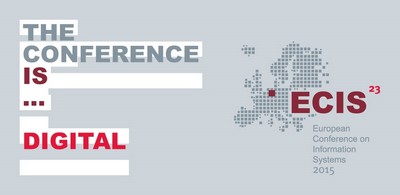DOI
10.18151/7217426
Abstract
Information System Design (ISD) applies information technology to achieve desired ends in organizations and implies many technology choices to be made. A successful design of information systems addresses the different views of all its stakeholders in these decisions. If we consider that sub-part of an IS that is intended to assist in customer processes, a purposeful assessment of the preferences of this anonymous mass is needed. Methods of Human-Centered ISD are not sufficient in that case for that they require too close integration of the subjects; and state of the art preference measurement techniques are likely to be too time-consuming and cognitively challenging if the number of alternatives is large. Building on the Q-Methodology, originally developed to reveal subjectivity in psychology, we suggest a novel method for user preference measurement. We report on a case in which we failed by applying standard techniques for user measurement, but succeeded with Q-Sort. By means of an experiment we subsequently compare the mentioned methods and identify root causes for failure and success we experienced in the case, which for Q-Sort include short execution time, measuring many design choices at one time, satisfaction of the interviewees, and an effective IT support.
Recommended Citation
Matzner, Martin; von Hoffen, Moritz; Heide, Tobias; Plenter, Florian; and Chasin, Friedrich, "A Method for Measuring User Preferences in Information Systems Design Choices" (2015). ECIS 2015 Completed Research Papers. Paper 131.
ISBN 978-3-00-050284-2
https://aisel.aisnet.org/ecis2015_cr/131


